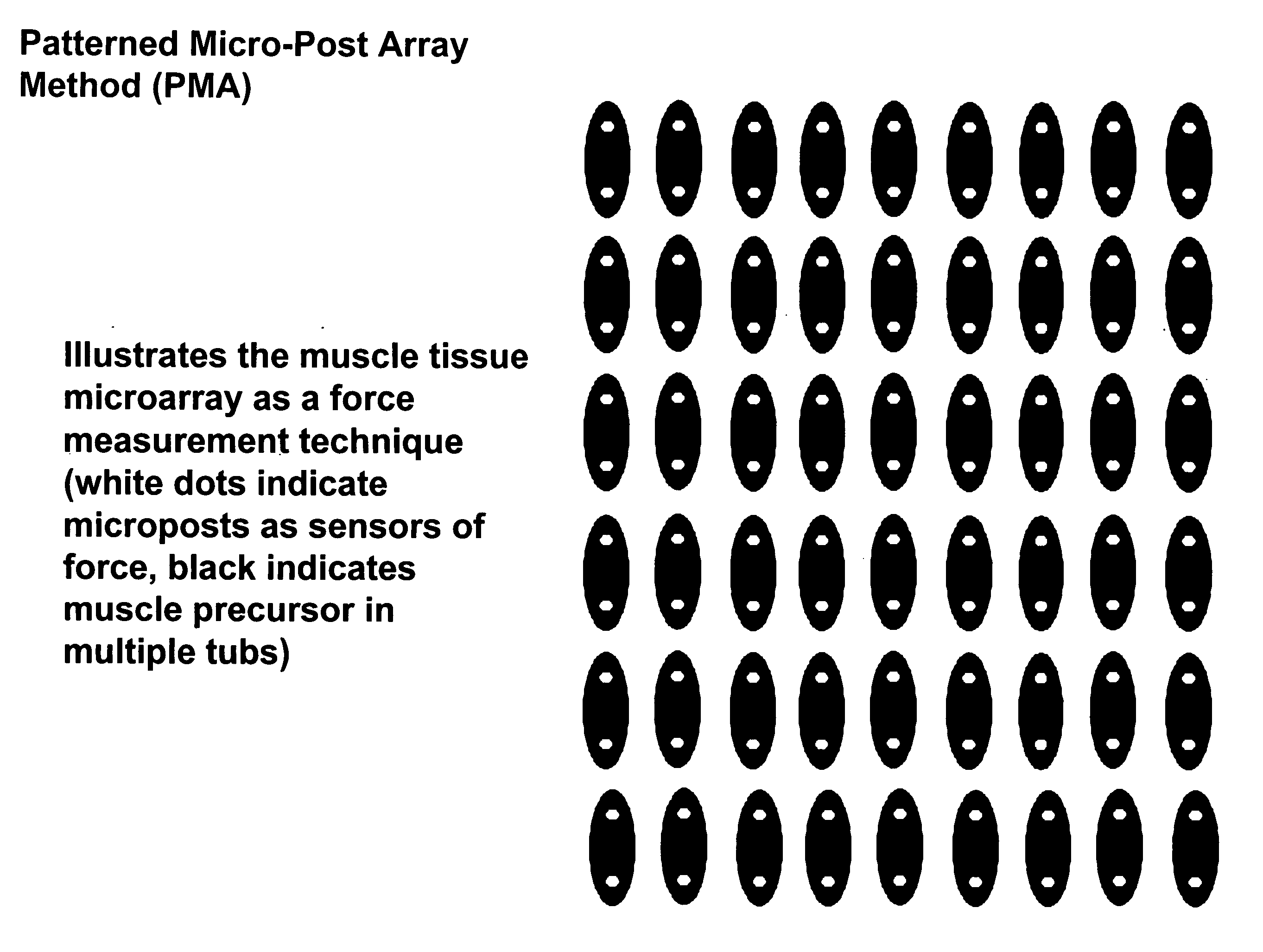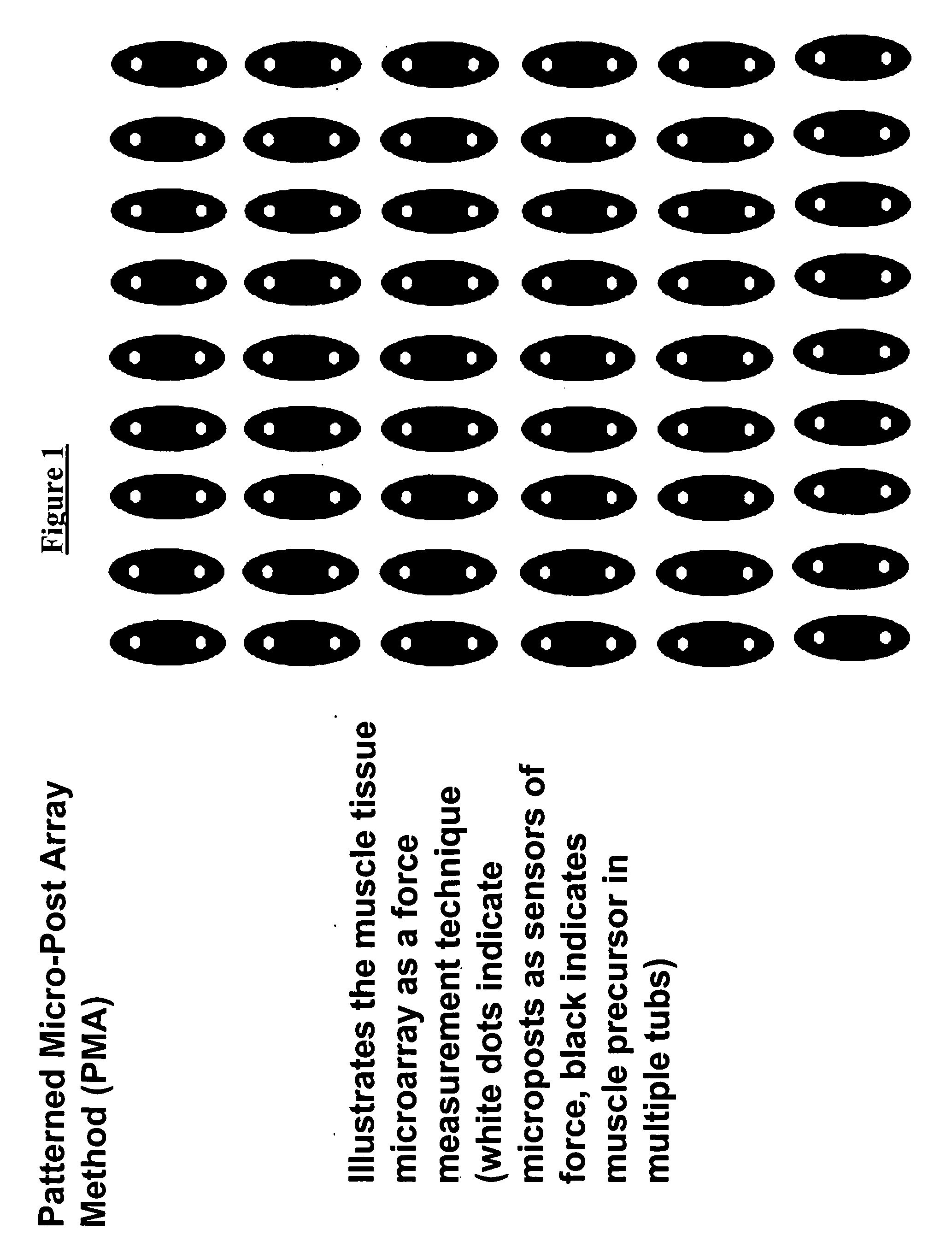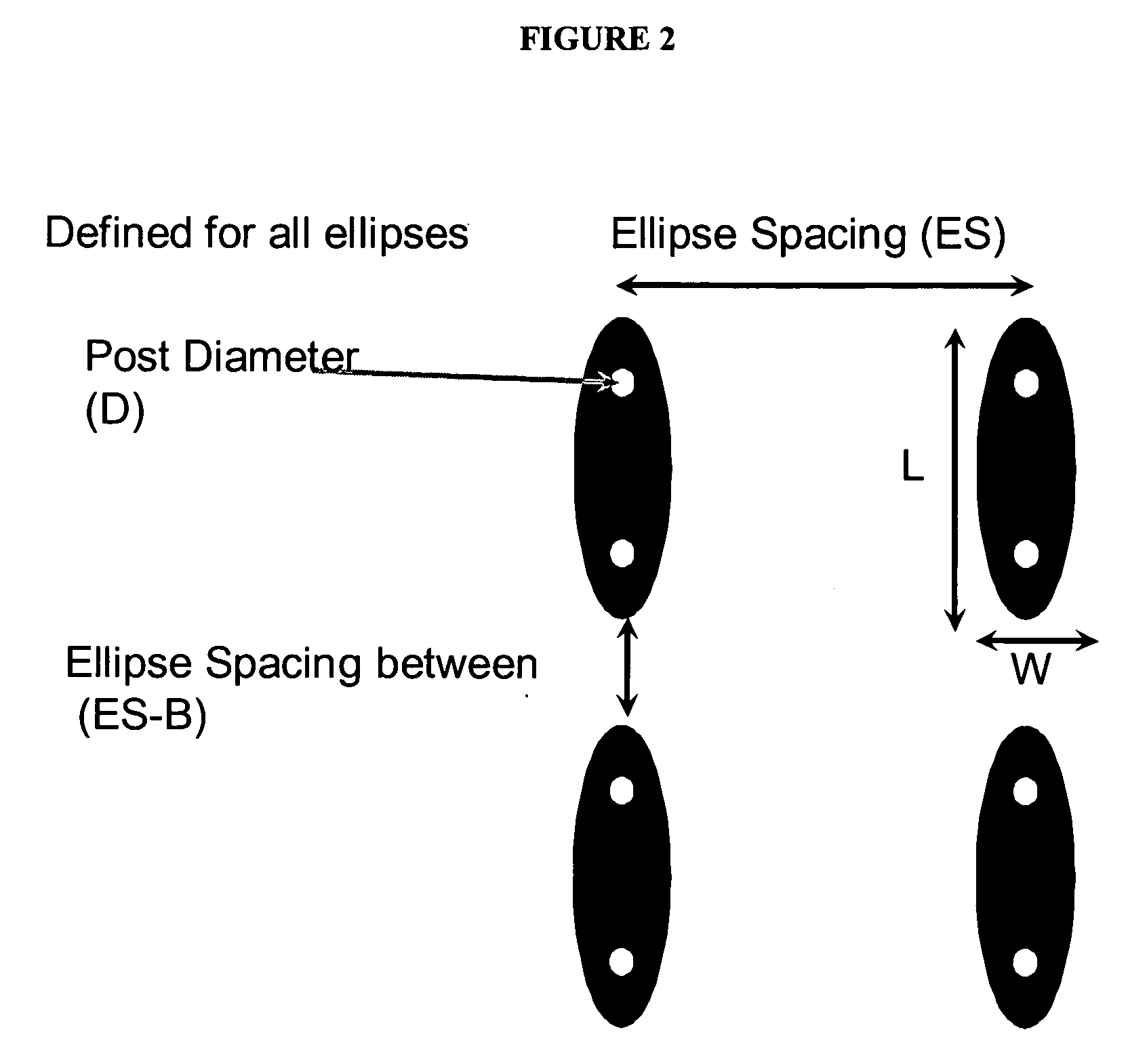Tissue sensor and uses thereof
a technology of tissue sensor and electrode, applied in the field of tissue sensor, to achieve the effect of efficient and accura
- Summary
- Abstract
- Description
- Claims
- Application Information
AI Technical Summary
Benefits of technology
Problems solved by technology
Method used
Image
Examples
example 1
Preparation of a Tissue in Combination with a Sensor
[0265] A tissue in combination with a sensor can be prepared as follows, which exemplifies a preparation using muscle tissue.
[0266] To produce skeletal muscle organoids, primary avian, rat or human muscle stem cells or immortalized murine muscle cells, were suspended in a solution of collagen and Matrigel™ which was maintained at 4° C. to prevent gelling. The cell suspension was then placed in a vessel with tissue attachment surfaces coupled to an interior surface at each end of the vessel. The vessel was positioned in the bottom of a standard cell culture chamber. Following two to four hours of incubation at 37° C., the gelled cell suspension was covered with fresh culture medium (renewed at 24 to 72 hour intervals) and the chamber containing the suspended cells was maintained in a humidified 5% CO2 incubator at 37° C. throughout the experiment.
[0267] Between the second and sixth day of culture, the cells were found to be organ...
example 2
Use of a Tissue Sensor for Screening a Compound for Bioactivity
[0278] A tissue and sensor, e.g., a muscle tissue and sensor prepared as described herein can be used to screen for bioactive compounds, for example, as follows.
[0279] An array of tissues formed in isolated wells in, e.g., a 384 or 96 well tissue culture dish is contacted with test compound by adding the test compound(s) to the wells, either individually or with a multipipettor. Readings from the sensor before and after (e.g., 1 second, 5 seconds, 30 seconds, 1 min, 5 min, 1 hr, etc. after) addition of the test compound determine the bioactivity of the compound. For example, contraction or relaxation of muscle tissue occurring after introduction of the compound is indicative that the compound is bioactive on the tissue.
[0280] The method of performing the assay will vary depending upon the particular assembly of the sensor and tissue. For example, where the tissue is independent from the sensor, a single sensor can be ...
example 3
Use of a Tissue Sensor for Screening a Library of Compounds for Bioactivity
[0281] A library of compounds is screened by, for example, preparing an array of tissues in combination with a sensor, and then contacting different members of the array with different members of the library of compounds. This can be achieved, for example, where a library of compounds is added to different wells of an array of wells comprising tissue. The tissue can be in combination with a sensor within the well, or a sensor or set of sensors can be moved from well to well, depending upon the type of sensor used.
[0282] In one aspect, an array of bubble-type sensor-muscle tissue assemblies is immersed in wells of a plate comprising members of the library. Pressure readings from the array of sensor-tissue assemblies provides a read out on the bioactivity of members of the library. In one embodiment, which is applicable to any of the library screening approaches described herein, the library is split up into ...
PUM
| Property | Measurement | Unit |
|---|---|---|
| molecular mass | aaaaa | aaaaa |
| molecular mass | aaaaa | aaaaa |
| length | aaaaa | aaaaa |
Abstract
Description
Claims
Application Information
 Login to View More
Login to View More - R&D
- Intellectual Property
- Life Sciences
- Materials
- Tech Scout
- Unparalleled Data Quality
- Higher Quality Content
- 60% Fewer Hallucinations
Browse by: Latest US Patents, China's latest patents, Technical Efficacy Thesaurus, Application Domain, Technology Topic, Popular Technical Reports.
© 2025 PatSnap. All rights reserved.Legal|Privacy policy|Modern Slavery Act Transparency Statement|Sitemap|About US| Contact US: help@patsnap.com



